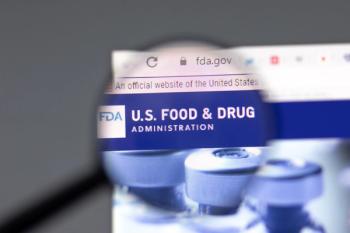
- Applied Clinical Trials-01-01-2011
- Volume 20
- Issue 1
Research Community Faces New Challenges
New user fees, health initiatives, and FDA compliance concerns are top issues for 2011.
The tension is mounting on Capitol Hill, as Republicans seek to cut the federal deficit by squeezing resources for government agencies, including the Food and Drug Administration and the National Institutes of Health. They're looking for opportunities to criticize lax regulatory oversight that compromises product and patient safety. Challenges to the Obama administration's health reform program will create uncertainties for biopharmaceutical companies about whether new fees and policies will be implemented as planned, or if industry will have to pay stiffer rebates and taxes without gaining the millions of additional customers promised coverage under a reformed health insurance system. Pressure on federal agencies to obtain additional revenues, moreover, will intensify government efforts to hit violative companies with stiff fines and to ratchet up user fees from industry.
Jill Wechsler
Fees first
The Prescription Drug User Fee Act (PDUFA) has to be reauthorized by October 1, 2012, for FDA to continue collecting nearly $700 million in fees to support the review process for drugs and biologics. Although that legislative deadline may seem far away, FDA wants to have a PDUFA V plan ready for public review by fall in order to transmit it to Congress early 2012; failure to reauthorize user fees by next summer theoretically would force FDA to lay off hundreds of staffers and shut down its drug review process.
Last April, FDA's Center for Drug Evaluation and Research (CDER) launched a two-year process for revising PDUFA. CDER Director Janet Woodcock noted that 65 percent of human drug review funding comes from user fees, a situation that some critics claim makes the agency overly dependent on industry. Yet, despite such qualms, no one suggests that FDA curtail any activities or cancel the fee program.
Pharma and biotech companies offered general support for user fees, while pointing out that multiple postmarketing requirements are slowing down the drug review process and undermining approval time frames. Patient advocates, pharmacists, and doctors agreed that the proliferation of risk evaluation and mitigation strategies (REMS) made drug development more costly and complicated prescribing and dispensing. Consumer groups focused more on direct-to-consumer drug advertising, seeking user fee support for mandatory pre-review of DTC ads, clearer prescribing information, better protection of patients in clinical trials, and full disclosure of clinical trial results.
FDA has been discussing these and other issues at meetings with manufacturers, patient and consumer groups, and healthcare professionals and academic experts, as part of a broad, transparent consultative process required by the FDA Amendments Act (FDAAA) of 2007. A main FDA goal for PDUFA V is to gain more flexibility in meeting review time frames and responding to sponsor meeting requests. The agency has proposed to extend the review clock for more complex applications, such as those with REMS, that require advisory committee meetings, or that involve inspections of foreign manufacturing facilities—but that appears to cover most NDAs.
The overarching issue is to what extent industry fees should fund FDA initiatives to improve drug development and regulatory science. FDA proposes to tap fee revenues to increase staff consultations on innovative clinical trial designs, on utilizing biomarkers in drug development, on complex manufacturing issues, and to standardize electronic submissions. The agency also seeks added resources to support the Sentinel Active Surveillance System, standards for meta-analysis, rare disease programs, and improved dose selection and safety assessments. But this year's fee to process a new drug application (NDA) with clinical data already exceeds $1.5 million, up from $1.17 million in 2008, and sponsors are wary that expanding the pool of activities supported by PDUFA would boost fees disproportionately.
Congress will address many of these issues as it crafts a broader FDA reform bill to carry the PDUFA reauthorization. As with FDAAA, this "must-pass" legislation is a prime candidate to establish a host of new FDA policies and programs: curbs on drug advertising, expanded drug reimportation, refining the REMS program, requiring new drugs to demonstrate comparative superiority, and enhancing FDA authority to pull drugs off the market and to issue subpoenas, to name a few. An FDA reform bill also may authorize the collection of user fees for generic drugs, an issue that has been discussed for years and now has industry support.
Biosimilars and CER
Another important FDA initiative is to establish standards and policies governing the development and approval of "similar" versions of biotech therapies. Patient and consumer groups and health plans and payers are pressing for a clear biosimilar development pathway to facilitate access to less costly therapies, a goal that will be increasingly important as more biologics come on the market. FDA held a two-day public meeting in November to launch the process for establishing a framework for developing biosimilars, as stipulated by the Affordable Care Act enacted last March 2010. A long list of brand and generic drug manufacturers testified on the scope and size of preclinical and clinical tests and data needed to document the safety and efficacy of such products, and FDA will be digesting these and other comments over the coming months. FDA officials appeared interested in identifying a middle ground between ensuring product safety and efficacy, and making affordable new treatments available to patients. However, Commissioner Hamburg indicated at a later meeting that a complete approval pathway for biosimilars may be elusive, as the science and products will evolve continuously.
The health reform legislation also expanded federal support for comparative effectiveness research (CER), and that initiative will begin to take shape in the coming year. The governing board for the Patient-Centered Outcomes Research Institute (PCORI) held its first meeting in November where it adopted bylaws and explored operating procedures. Its first tasks are to hire an executive director and staff, develop a communications plan, and map how the strategy will work with its Methodology Committee.
Before PCORI awards grants for new CER projects, the Board wants to assess what research and analysis already is going on in this field and where there are information gaps to fill. The Department for Health and Human Services (HHS), NIH, and the Agency for Healthcare Research and Quality have dispersed $1.1 billion for CER projects over the last two years, and most of these initiatives are up and running. PCORI's "environmental scan" could benefit from a planned HHS initiative to establish an online CER catalog, and from a database of federally funded CER projects being created by the Partnership to Improve Patient Care. The Board also would like to review state and private CER initiatives to better identify early projects that can increase general understanding of CER and further illuminate PCORI's role.
Costs drive compliance
By steering patients and providers to the most effective treatments, CER advocates hope to improve healthcare quality, while also reducing spending on medical services and products. With healthcare consuming an ever-growing portion of federal and state budgets, authorities are looking hard at all opportunities to save money and generate revenues, and healthcare fraud and abuse is a prime target. The Justice Department announced in November that it recouped $3 billion in civil settlements and judgments last year, much of it from pharmaceutical companies. At the top of the list is Pfizer's $2.3 billion settlement for promoting unapproved drug uses; Astra Zeneca agreed to a $302 million civil settlement and Novartis paid $193 million. FDA also has been stepping up actions against investigators and research organizations that violate the rules.
There's no sign of any letup as extensive pharma layoffs promise to encourage more dismissed workers to blow the whistle on corporate malfeasance. In October, GlaxoSmithKline agreed to a $750 million settlement, and Merck negotiated a $950 million deal with the Justice Department to settle marketing violations related to Vioxx (on top of the $5.6 billion the company has paid out to settle various Vioxx lawsuits and claims).
Because stiff fines don't seem to compel some companies to toe the line, the regulators and prosecutors are weighing even harsher penalties. One threat is to bring criminal charges against corporate executives considered responsible for serious violations. A former Glaxo executive is headed for trial for making false statements and blocking an FDA investigation; conviction could bring a jail term as well as fines. If that doesn't compel companies to clean up their acts, the feds also are looking to ban companies committing fraud from doing business with Medicare and Medicaid under a stiffer federal exclusion policy.
In addition to waving the enforcement stick, FDA leaders talk of more guidance and assistance to help companies meet quality and safety standards and to bring high quality drugs more quickly to patients. Efforts by industry and regulators to find the resources and appropriate policies to achieve this objective will be in the spotlight in the coming year.
Jill Wechsler is the Washington editor of Applied Clinical Trials, (301) 656-4634
Articles in this issue
almost 15 years ago
Applied Clinical Trials Digital Edition - January 2011almost 15 years ago
Obesity Wins One, but Rest of Field Uncertainalmost 15 years ago
Site Coordinators: An Untapped Resourcealmost 15 years ago
EFGCP to Establish Changes in GCP Trainingalmost 15 years ago
African Americans in Clinical Trialsalmost 15 years ago
The New Year Brings Same Old Battlesalmost 15 years ago
Workload Measurement Instrumentalmost 15 years ago
Frustration with IRB Bureaucracy & Despotismalmost 15 years ago
Collaborative Staffing Modelalmost 15 years ago
Business and News Update January 2011Newsletter
Stay current in clinical research with Applied Clinical Trials, providing expert insights, regulatory updates, and practical strategies for successful clinical trial design and execution.






.png)



.png)



.png)
.png)
